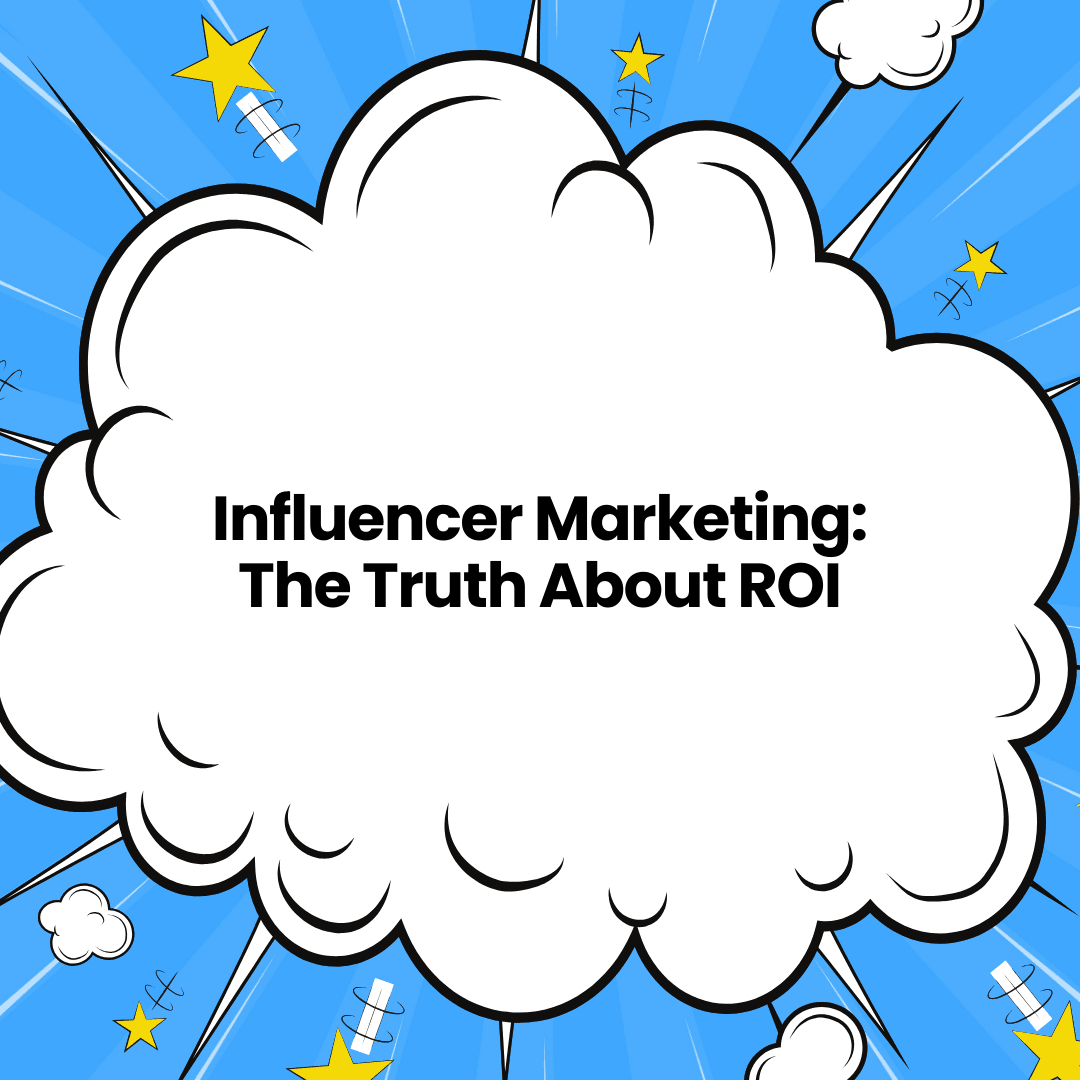In today’s digital age, influencer marketing has become a popular strategy for brands looking to increase their reach, boost engagement, and drive sales. However, one critical question remains: Is the return on investment (ROI) worth it? While influencer marketing can yield impressive results, it also comes with challenges that businesses must navigate. In this blog, we’ll explore the real ROI of influencer marketing and what factors determine its success.

Understanding ROI in Influencer Marketing
Before diving into whether influencer marketing is worth the investment, it’s important to understand what ROI means in this context. Unlike traditional marketing efforts, influencer marketing ROI isn’t just about direct sales—it also includes brand awareness, audience engagement, and long-term customer loyalty.
When calculating ROI, businesses should consider the following key metrics:
Engagement Rate: Likes, shares, comments, and saves indicate how well the content resonates with the audience.
Conversion Rate: The percentage of people who take a desired action, such as signing up for a newsletter or making a purchase.
Brand Mentions: Increased visibility and recognition in conversations across social platforms.
Customer Acquisition Cost (CAC): The expense of acquiring a customer through influencer collaborations.
The Benefits of Influencer Marketing
One of the reasons influencer marketing remains popular is the numerous benefits it offers. Let’s take a closer look at some of them:
- Authentic Audience Connection
Unlike traditional advertisements, influencer marketing feels more personal and trustworthy. Since influencers have built strong relationships with their followers, their recommendations often carry more weight, leading to higher engagement and conversions.
- Enhanced Brand Awareness
With social media platforms evolving constantly, reaching new audiences can be challenging. However, influencers help brands gain exposure to potential customers who may have never encountered their products before. This leads to increased brand visibility and credibility.
- Higher Engagement Rates
People tend to interact more with content from influencers than they do with brand-generated content. This increased engagement helps businesses generate valuable conversations and customer feedback.
- Cost-Effective Compared to Traditional Advertising
Although high-profile influencers charge substantial fees, micro and nano influencers often offer affordable partnerships while maintaining strong engagement rates. This makes influencer marketing accessible to businesses of all sizes.
The Challenges of Influencer Marketing
While influencer marketing offers many advantages, it’s not without its challenges. Understanding these potential pitfalls can help businesses make informed decisions.
- Fake Followers and Engagement Fraud
Unfortunately, some influencers inflate their follower count or engagement metrics using bots or paid services. This can lead to wasted marketing budgets if brands don’t conduct proper research before collaborating.
- Difficulty in Measuring Direct ROI
Unlike pay-per-click ads, tracking the direct impact of influencer marketing can be complex. Although engagement and brand awareness are crucial, they don’t always translate into immediate sales.
- Finding the Right Influencer
Not all influencers will align with your brand values or resonate with your target audience. Selecting the wrong influencer can lead to poor campaign performance and wasted investment.
How to Maximize ROI in Influencer Marketing
To ensure a successful influencer marketing campaign, businesses should take strategic steps to maximize their ROI. Here’s how:
- Set Clear Goals
Before launching a campaign, define your objectives. Are you aiming to increase brand awareness, drive website traffic, or boost sales? Establishing clear goals will help guide your strategy and measure success.
- Choose the Right Influencers
Rather than focusing solely on follower count, consider engagement rates, audience demographics, and content quality. Micro-influencers (10K-50K followers) often deliver higher engagement at a lower cost compared to mega-influencers.
- Leverage Affiliate Marketing and Discount Codes
Providing influencers with unique discount codes or affiliate links helps track conversions more effectively. This allows brands to measure direct sales and determine which influencers generate the best ROI.
- Monitor and Analyze Performance
Track campaign performance using analytics tools like Google Analytics, social media insights, and UTM tracking links. Analyzing data helps brands refine their strategies for future campaigns.
Conclusion
Ultimately, influencer marketing can be a highly effective strategy if executed correctly. While it requires careful planning, the potential for increased brand awareness, engagement, and sales makes it a valuable investment. To achieve the best ROI, businesses must focus on selecting the right influencers, setting clear objectives, and continuously analyzing campaign performance.
Feel free to contact us for a free consultation.

